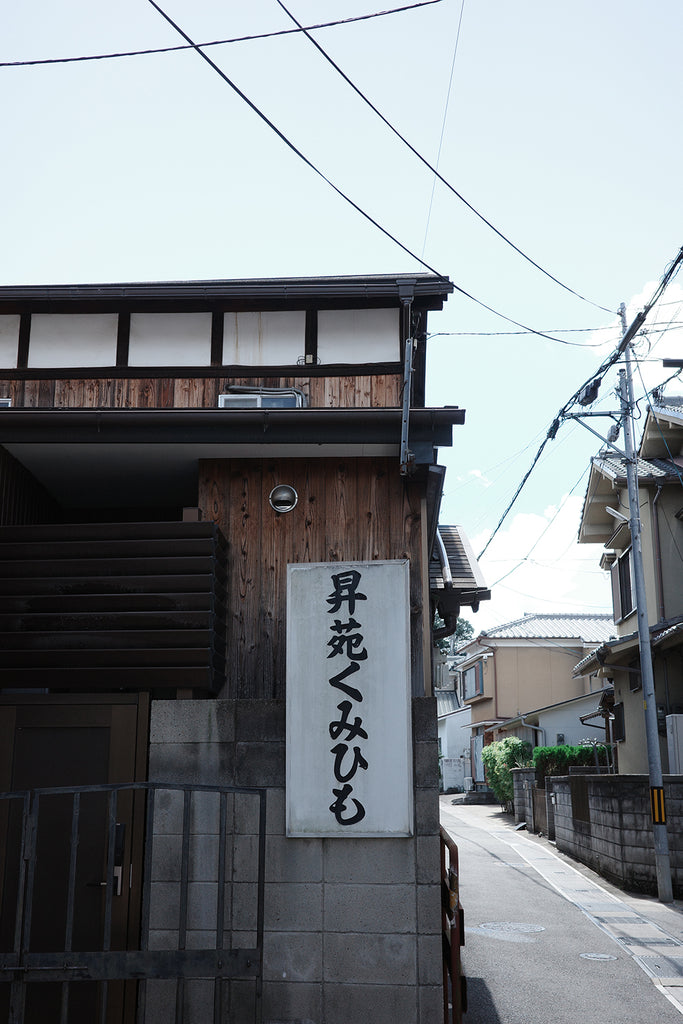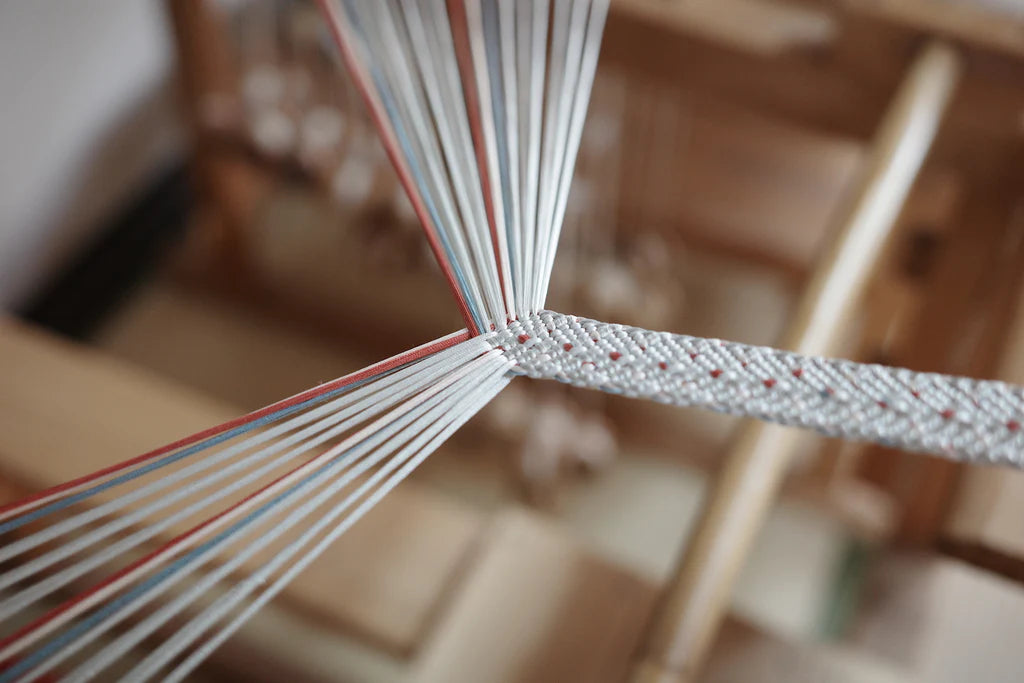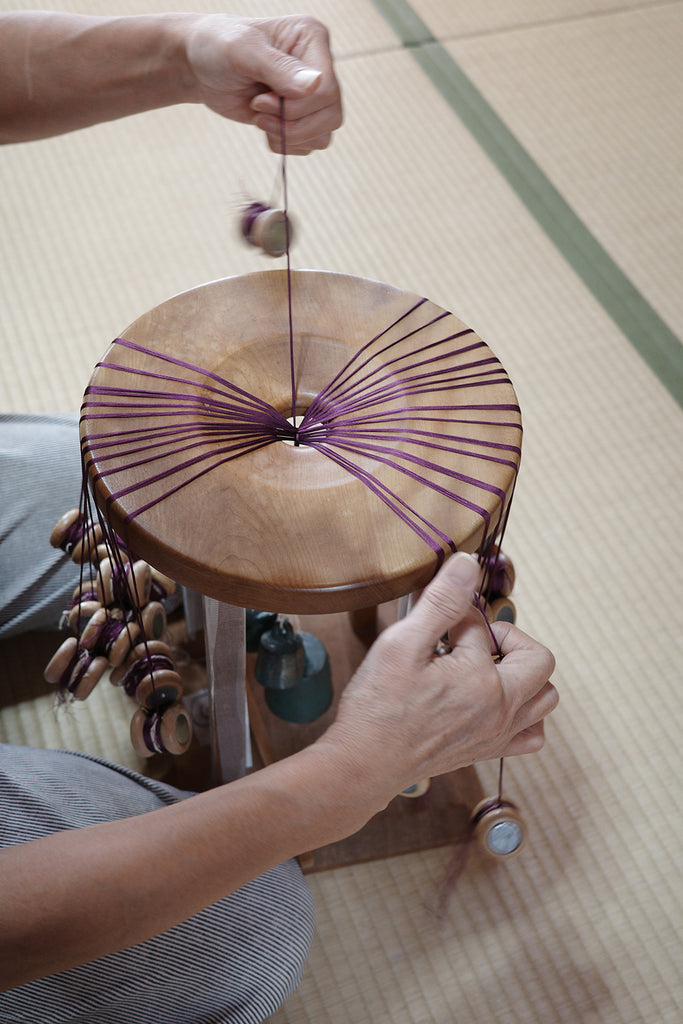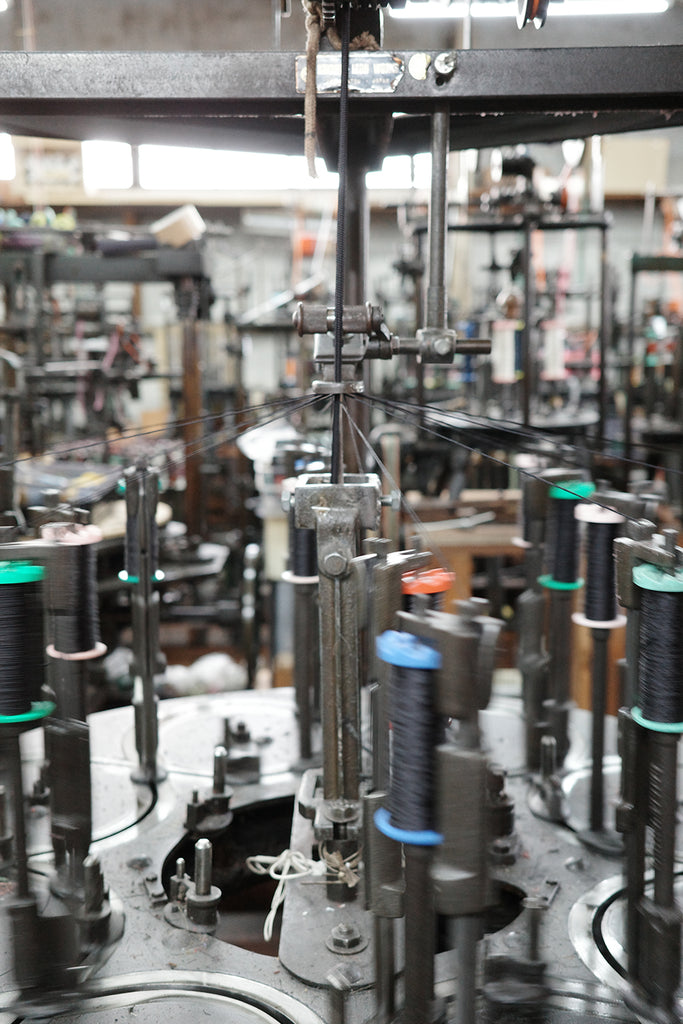
ARP BELT - LEIGH MILLER x SAYAKA DAVIS
Interview: Showen Kumihimo
Text and Photos by Aya Nihei
When two designers' sensibilities meet, what kind of landscape emerges?
Leigh Miller, a San Francisco-based designer who creates sculptural jewelry, and Sayaka Davis, a New York-based fashion designer; the ARP BELT was born in the Fall of 2023 as a result of their collaboration.
"I've always asked myself how we can utilize and develop traditional Japanese techniques in the modern age," says Sayaka.
"I wanted something that reflected the sense of timeless elegance of design that we share," says Leigh.
The belt is made of Kumihimo cords, a traditional craft of Kyoto, Japan. Essayist Aya Nihei visited "Showen Kumihimo," the company in charge of the production, to learn more about the history and origins of braided Kumihimo, which have been used for over 1,000 years.
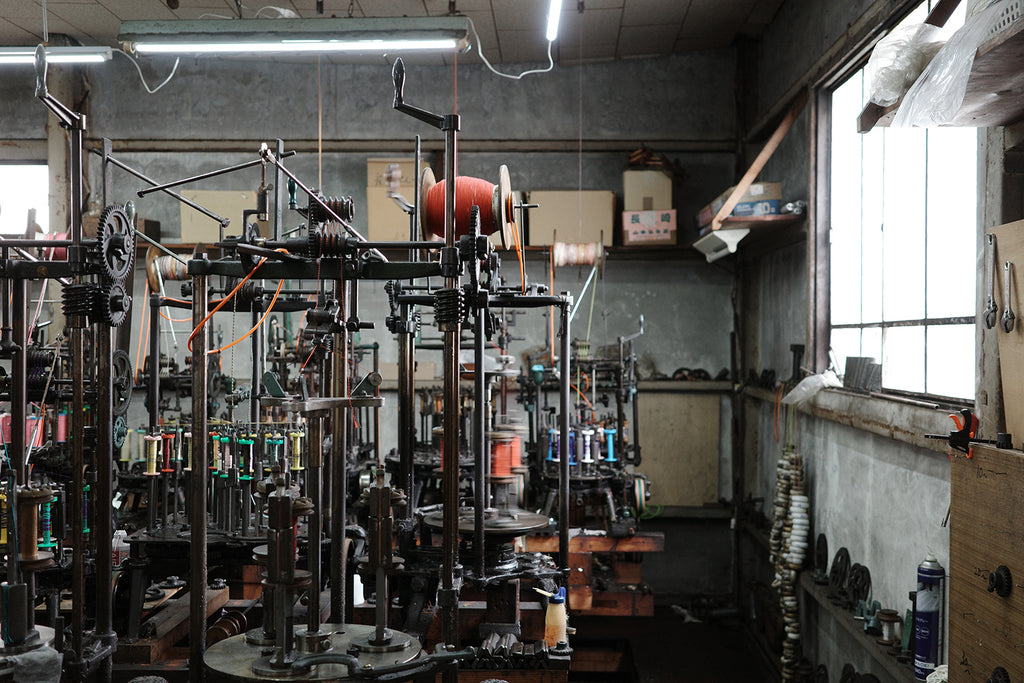
About 70 cord-making machines were in operation at the factory. On this day, braided cords of various colors and patterns were being braided.
When you hear the word "Kumihimo", what comes to mind? A traditional Japanese handicraft. Kimono Obi-jime belt. To me, that was it.
That’s why I was surprised, groaning and marveling when I encountered the dazzling world of Kumihimo
at "Showen Kumihimo," a manufacturer in Uji City, Kyoto, and was completely fascinated by it. Now, I am a big fan of Kumihimo.
The first blow was ‘what is a Kumihimo in the first place?’ According to Shohei Nose of Shoen Kumihimo, "Most of the common cords in the world are Kumihimo.”
What? Kumihimo is a ‘Kyoto thing’ recognized as a traditional craft and ‘something only found in Japan,’ right? His answer was no. "Cords with the same structure as Japanese Kumihimo exist all over the world."
Okay...Then, what structure?
Mr.Nose says "we divide cord structures into three categories: knitting, weaving, and braiding.”
"Knitting," as you know, refers to a structure in which a single thread is hooked and tied in a series of loops, just like knitting woolen yarn. When the thread is untied, it returns to a single strand.
“Weaving" is a structure in which the weft threads run in a direct line with the warp threads, as can be seen from the swiping motion of the loom.
Then there is "braiding," which is a spiral structure, made by intricately intertwining bundles of three or more threads. There are many types of cords with braiding structures in the world, which are specifically called ‘Kumihimo’ in Japan.
How come such ordinary cords have been appreciated as traditional crafts and treated with such respect in Japan?
Mr. Nose says "I think it is because Japan is a unique country that has developed Kumihimo in its own way and has even found spirituality within them."
A cord is a primitive tool for connecting one thing to another in order to create a new function. So all over the world, every civilization has had a culture of cordage. Once the function of braided cords was nearly fulfilled, they fell into disuse and humans developed interests
in weaving and knitting techniques. This is the world's common sense. However, Japan, for some reason, has deviated from this common sense, showing a nerdy obsession with "braiding," and has deepened the development of Kumihimo.
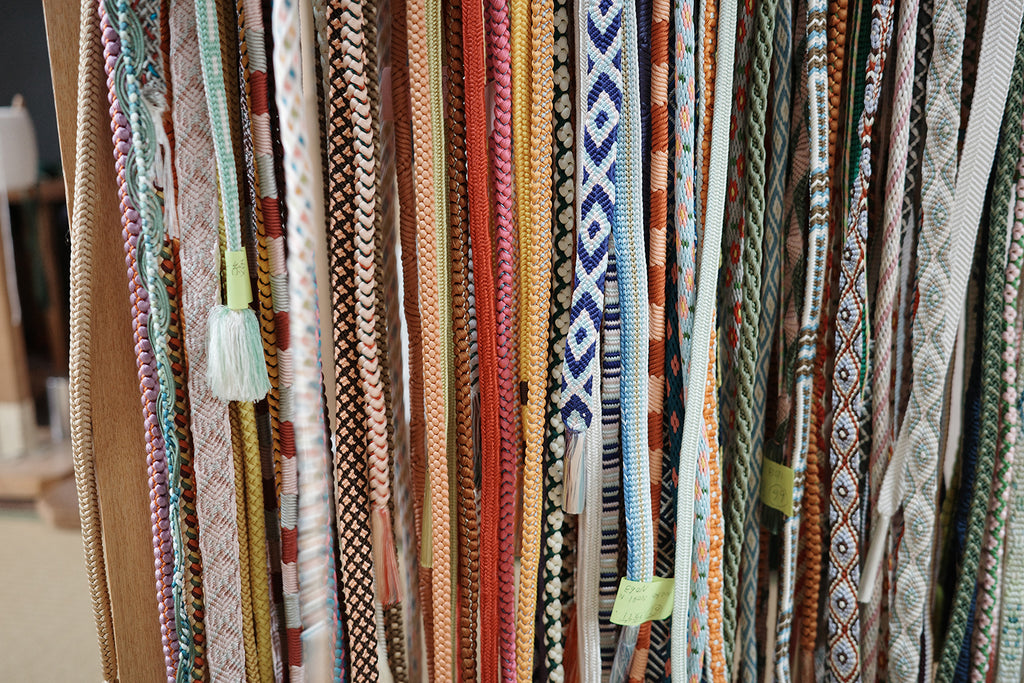
Modern Kumihimo can be hand-braiding or machine-braiding, and ARP BELT is made by machine-braiding.
Looking back at history, it is said that braided cords came to Japan from the continent more than 1,400 years ago via the Silk Road as part of Buddhist ritual implements, along with Buddhism. First to the Heijo-kyo capital in Nara, and then to the Heian-kyo capital in Kyoto. People at that time must have found braided cords curious, exotic, and beautiful. Since then, braided cords have been widely used for ornaments in temples and shrines as well as for the costumes of the aristocrats. It is said that a ministry in charge of Kumihimo existed in the Heian period (794-1185).
As time went by and warriors began to wear swords and armor, Kumihimo began to be used in new ways. People preferred to wrap Kumihimo around the handles of swords (and wrapped them decoratively, in appealing patterns) and each piece of armor was bound together with Kumihimo. Warlords even designed their own armor by combining Kumihimo in their favorite colors.
Once the culture of Chanoyu (tea ceremony) began to flourish, Kumihimo was used for tea ceremony utensils, such as tea caddies (called Shifuku). Tea masters often tied the cords into intricate knots like butterflies and flowers. "In those days, Chanoyu was a place of politics. To prevent guests from being poisoned, masters guarded their teas with knots that only they could untie. The knots of the Kumihimo also worked as keys," says Mr. Nose.

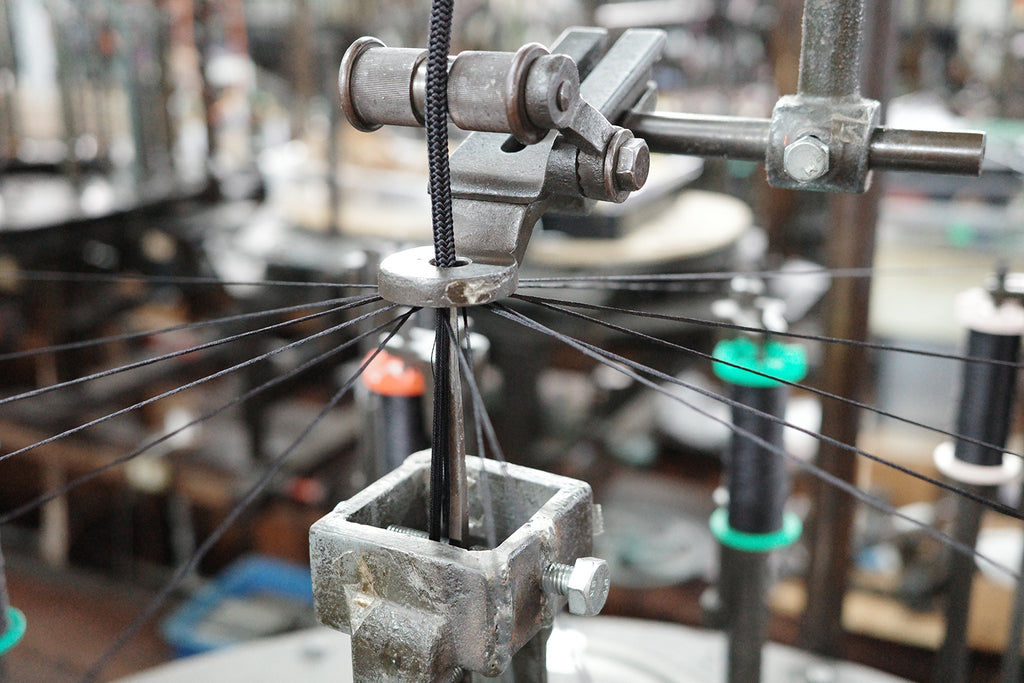
ARP BELT (black) is being assembled on a lacing machine. It is made of round cord with a bundle of silk threads in the core.
While Kumihimo was admired with its functionality in each era, the Japanese craze for Kumihimo has never cooled down. But wait, I’m still wondering why Kumihimo was so valued. Did sword handles really have to be wrapped with Kumihimo?
"I think it has something to do with spirituality," says Mr.Nose. "The Japanese word ‘musubu’ (tie) comes from a god that appears in ancient Japanese mythology. It originated from the sound ‘musuhi’, which meant that by merging things, new energy would be born.” Because of this sacred background, Japanese Kumihimo has come to be considered more than a functional tool or ornament: ‘something that possesses power’ and ‘something that protects you’. This is why Kumihimo were eagerly incorporated into Buddhist ritual implements at temples and into swords and armor. The amulets with Kumihimo cords and knots sold at shrines are also an expression of spirituality. "The Japanese people have long relied on invisible power when they could not do something by their own strength, as we call it ‘Gen-katsugi,’ I think that the Japanese mind and Kumihimo have developed in tandem," says Mr.Nose.

Finishing work on the ARP BELT: the buckle by Leigh Miller is connected to the braided cord, which is then reinforced by wrapping it around with thinner braided cord.
Thanks to nerdy Japansese ancestors and their spirituality, the technique of Kumihimo never ceased and has been handed down to the present day.
Originally, Kumihimo were made by hand using only silk threads. The methods of braiding Kumihimo have diversified in shape, from cylindrical round cords to flat cords, and has also been diversified in various designs. According to Mr. Nose, "there are more than 100 or 200 different patterns just for Obijime.” Japan is a really rare (and I’d say lovely!) country that has poured so much passion into such tiny braiding cords.
Incidentally, the ARP BELT is a round cord braided with a method called ‘Karauchi’, which is one of the oldest methods to exist in Japan since Kumihimo was first introduced to the country. When I hear that it’s the same Kumihimo as still used in temples and shrines, I feel divinity from even a single piece of cord.
The ARP BELT, a collaboration between Leigh Miller and Sayaka + Davis, is a result of the two designers' creativity. It embodies
the ancient spirit of Kumihimo, which is the belief that fusion creates new value and power. Wear the story hidden in the belt along with your clothes, the pleasure of the ARP BELT.
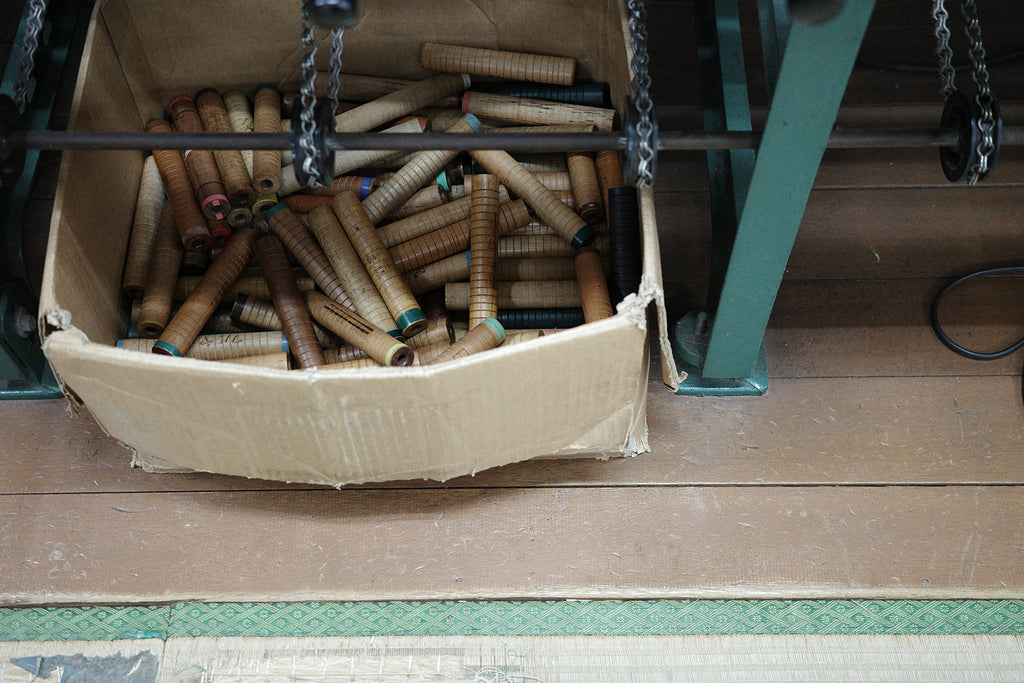
Showen Kumihimo: https://showenkumihimo.com/

